House of fun: Cristina Celestino’s VIP ‘Happy Room’ for Fendi is fluffy but refined
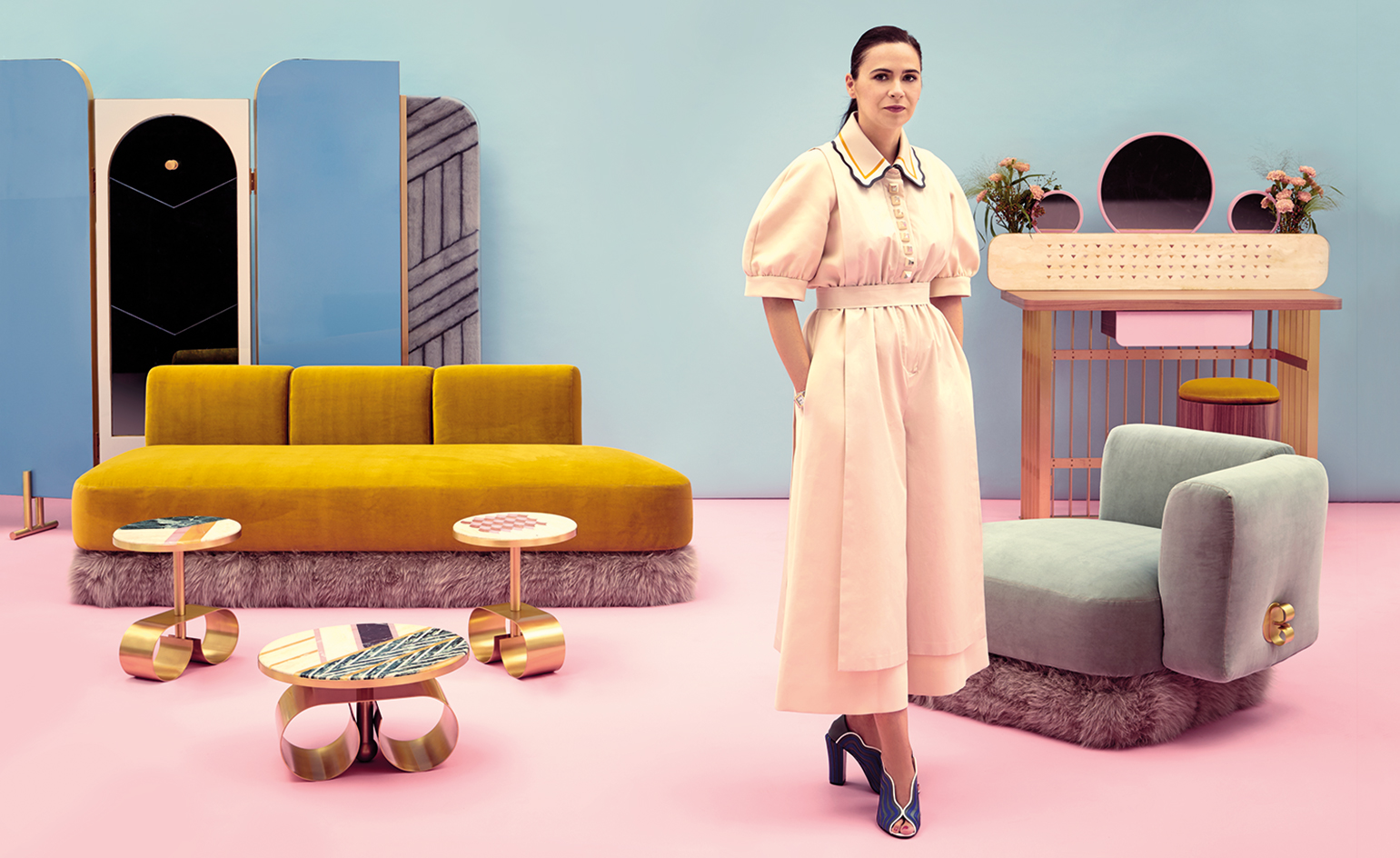
Female designers are few and far between in the world of high design. In Italy they are, quite oddly, nearly non-existent. Which is what makes Cristina Celestino a singular rising star. Born in Pordenone, a small town in Italy’s far north-eastern corner, and currently based in Milan, Celestino has been working behind the scenes for nearly a decade as an architect, designer and the founder of design studio Attico, which focuses on research into materials and shape.
Although she has presented standout individual pieces at Milan’s Salone del Mobile – including glass furniture for Tonelli Design and, most recently, a feather-inspired mosaic wall for mosaic specialist BottegaNove, Celestino will make her big-ticket design debut at Design Miami (30 November to 4 December) with a collaboration with Fendi.
‘I’ve had my eye on Cristina for three or four years,’ said Maria Cristina Didero, the Milan-based design curator who hatched the collaboration. ‘She has a soft, elegant approach to design that is rare right now. She’s done exceptional work but nothing on this scale of a full collection. So it’s a very exciting moment for her'.
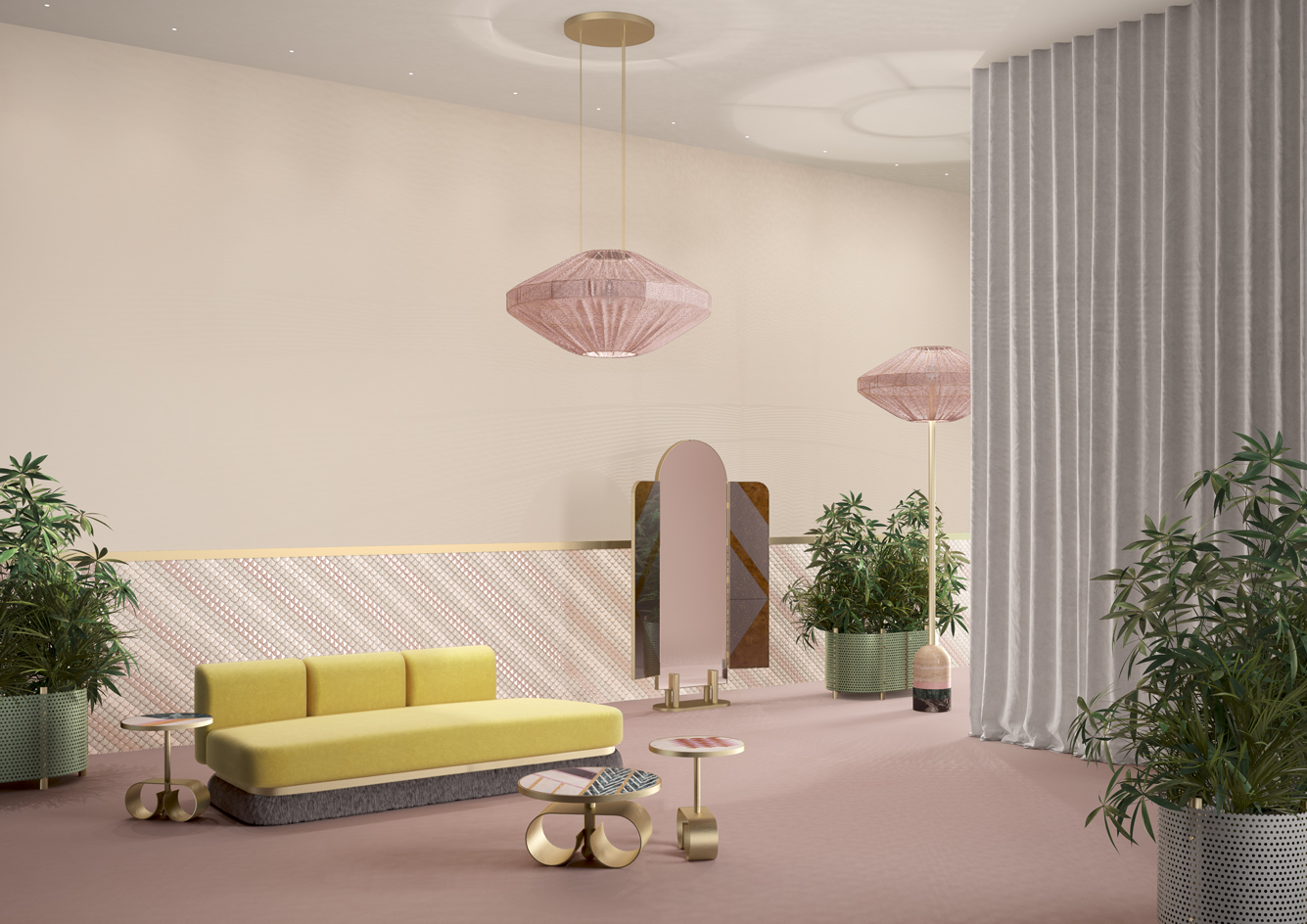
A render of The Happy Room
Fendi, marking its seventh anniversary at Design Miami, has become a benefactor of sorts for trail-blazing design projects with up-and-coming or recently hot designers. Celestino’s brief was to create Fendi’s first travelling VIP room: an interior space comprising 12 pieces of furniture and lighting that will be showcased and sold in Fendi’s top stores and dazzle its discerning, seen-everything clientele with another layer of something fabulous.
Collectively dubbed ‘The Happy Room’, the designs – including a fox-trimmed couch and armchair, a standing mirror, an onyx, marble and brass vanity table and low marble tables – are feminine but not flimsy. What could have been overly girly or ‘Barbie Dreamhouse’ is, in fact, highly refined. The lines are pure, the shapes under control, and the toned-down but intricate collages of materials and enticing colours suggest Celestino’s talent as a designer of beautiful furniture. Her palette of mint green, soft mustard and powder grey punched with a couple of hot hits of flamingo pink was inspired by Giò Ponti-designed homes in Venezuela. ‘He used a lot of marble that was very graphic and modern,’ she observes.
But a Fendi brief always encourages designers to play with the fashion brand’s rich caches of leather and fur and its exceptional artisanal techniques. And here, Celestino has delivered the goods. Of the many signature handcrafts that Fendi has perfected, the one that really captured the designers’ attention was its famous intarsia – a technique that is used to sew up a dizzying array of different furs into intricate puzzles of colour and texture on clothing.
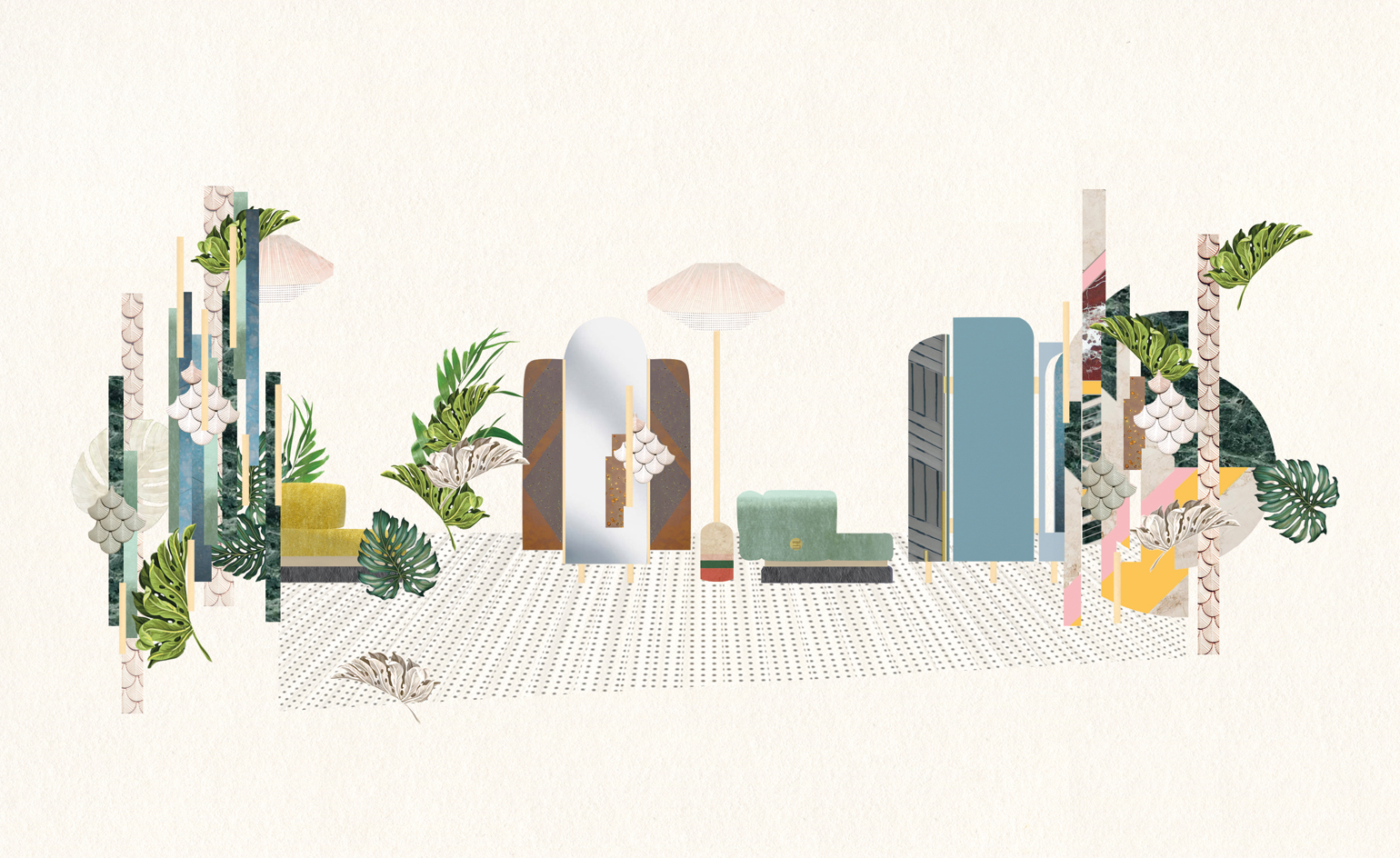
A sketch shows Celestino's design details
Celestino applied the same principle to precious stone, slicing up chunks of green Saint Denis, red Lepanto, Roman travertine and tinted onyx to create pastel petal or other graphic intarsia patterns on a series of three low tables featuring satin brass bases in the shape of giant earring backs. The same decorative technique appears in the triangle motif on the vanity top and the lacquered wood sides of the five-shutter screen. The side panels of the standing mirror feature an intarsia effect created using coloured lacquer.
‘Many times, the lining inside fur is more beautiful than the outside, because you see how much work has gone into it,’ Celestino remarks of the intarsia process. ‘You see all the seams. I wanted to create something very artisanal and very difficult to make. It’s an idea of luxury that isn’t obvious to see, but is reflected by all the work that goes into each piece. Each was complicated to make.’ Perhaps the most complicated is the screen, which features panels of pinstriped mink fur embedded in sheets of transparent resin, a startling prospect that seems to have trapped the fur in time. The Ziplock effect places the dazzling intarsia seaming of the fur backing on full view. Meanwhile, the standing lamp with a brass rod and a marble sandwich base has a perforated and pleated leather shade, made from ultra-thin leather that Fendi uses in its clothing.
‘I’m very happy about the collaboration,’ remarks Silvia Fendi, the granddaughter of founder Adele Fendi and frequent commissioner of high design for the Rome-based company. ‘She has perfectly translated our Fendi codes into a truly sophisticated and feminine collection of design pieces. It’s also playful and light.’
The full-scale Happy Room will be shown in Miami, with Celestino’s feather mosaic wall as a backdrop.
As originally featured in the December issue of Wallpaper* (W*213)
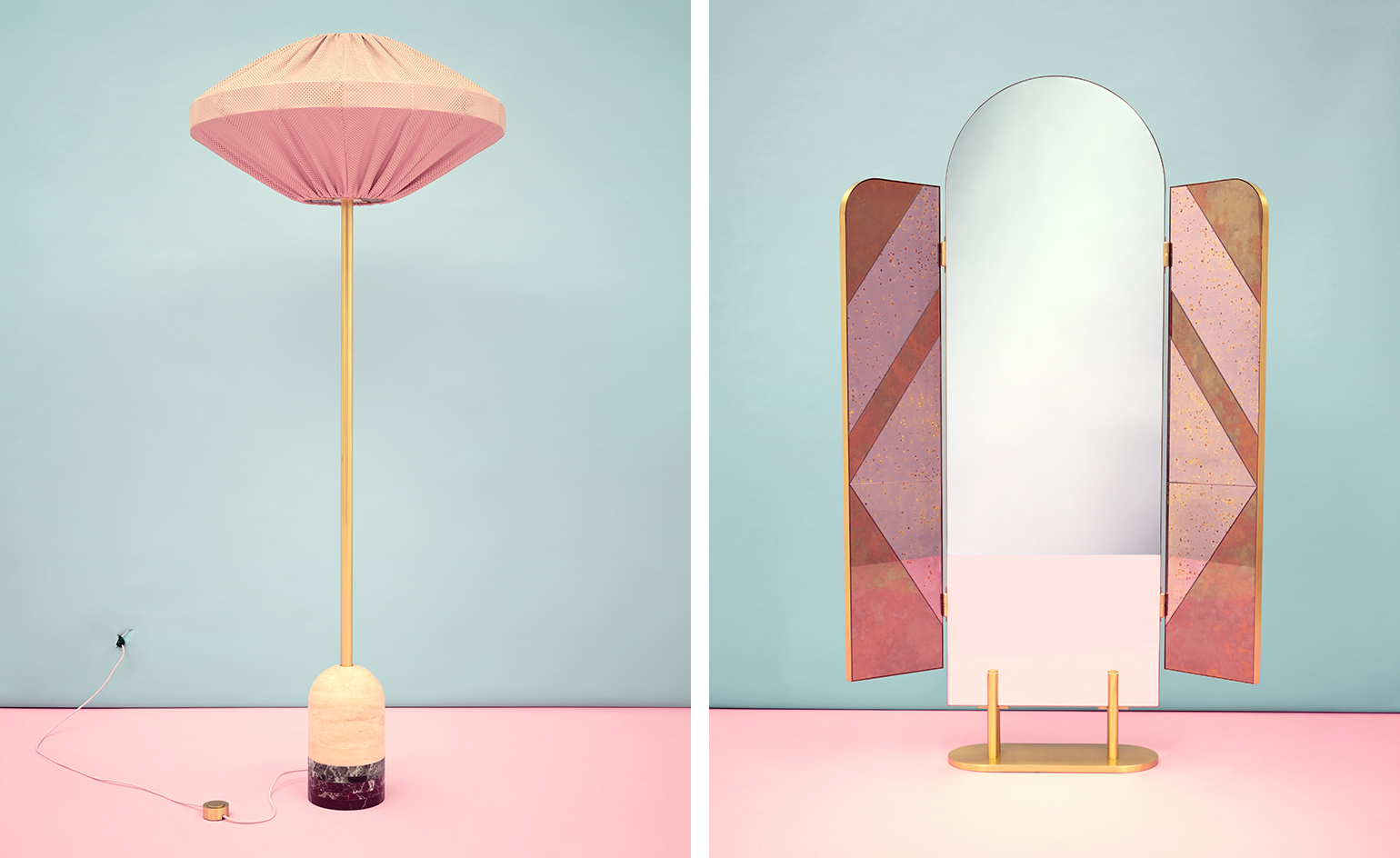
Left, a standing lamp features a very thin, pleated leather that Fendi uses in its fashion collections. Right, Celestino’s standing mirror, with intarsia-effect panels created using coloured lacquers – a reference to the seaming work that goes into Fendi’s furs
INFORMATION
For more information, visit the Design Miami website and the Fendi website
Wallpaper* Newsletter
Receive our daily digest of inspiration, escapism and design stories from around the world direct to your inbox.
JJ Martin
-
 Naoto Fukasawa sparks children’s imaginations with play sculptures
Naoto Fukasawa sparks children’s imaginations with play sculpturesThe Japanese designer creates an intuitive series of bold play sculptures, designed to spark children’s desire to play without thinking
By Danielle Demetriou
-
 Japan in Milan! See the highlights of Japanese design at Milan Design Week 2025
Japan in Milan! See the highlights of Japanese design at Milan Design Week 2025At Milan Design Week 2025 Japanese craftsmanship was a front runner with an array of projects in the spotlight. Here are some of our highlights
By Danielle Demetriou
-
 Tour the best contemporary tea houses around the world
Tour the best contemporary tea houses around the worldCelebrate the world’s most unique tea houses, from Melbourne to Stockholm, with a new book by Wallpaper’s Léa Teuscher
By Léa Teuscher
-
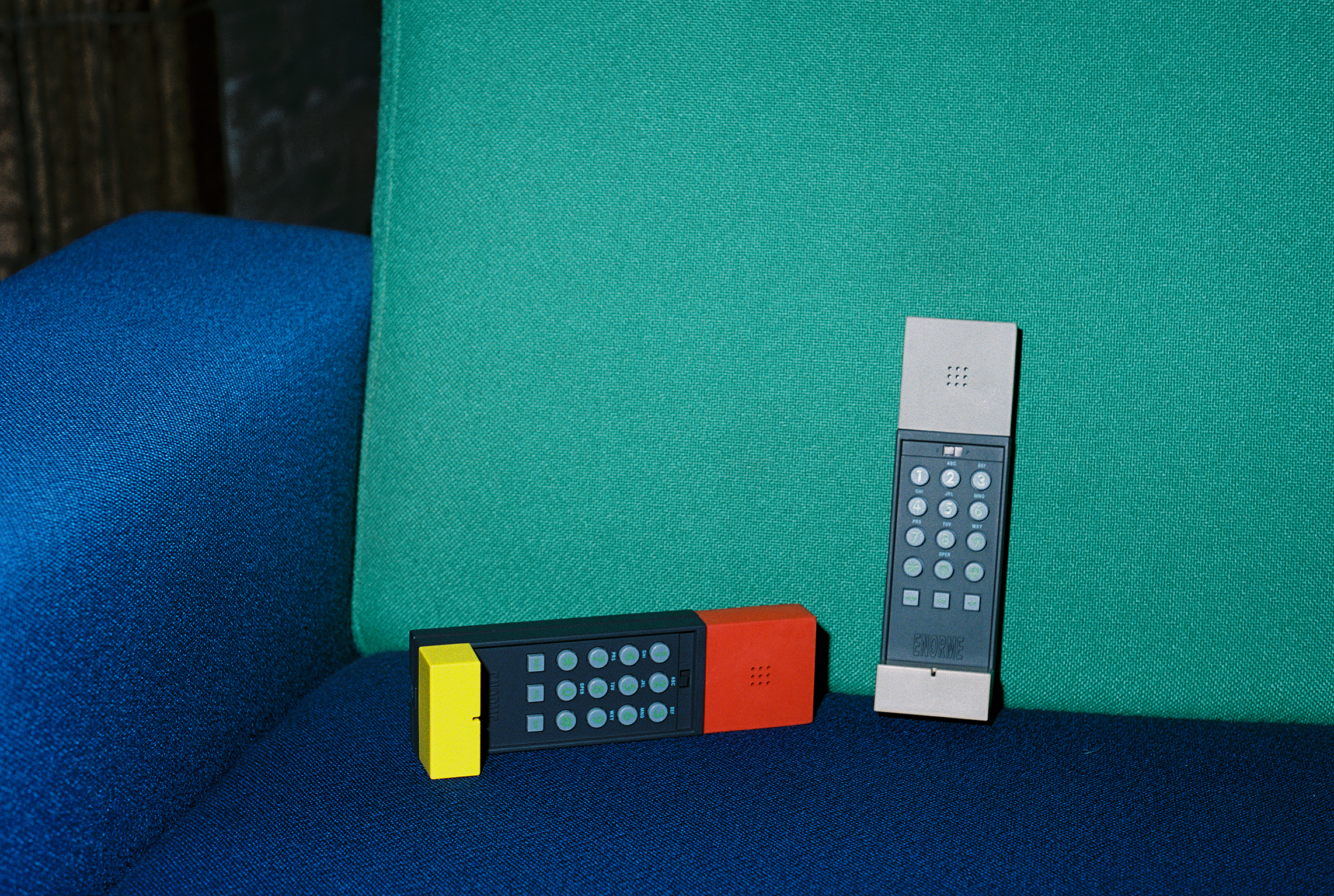 Basic.Space launches its first IRL shopping event – in an empty West Hollywood mall
Basic.Space launches its first IRL shopping event – in an empty West Hollywood mallWith the launch of its first in-person event in LA this weekend, the e-commerce platform is looking to bring collectible design to a whole new audience
By Adrian Madlener
-
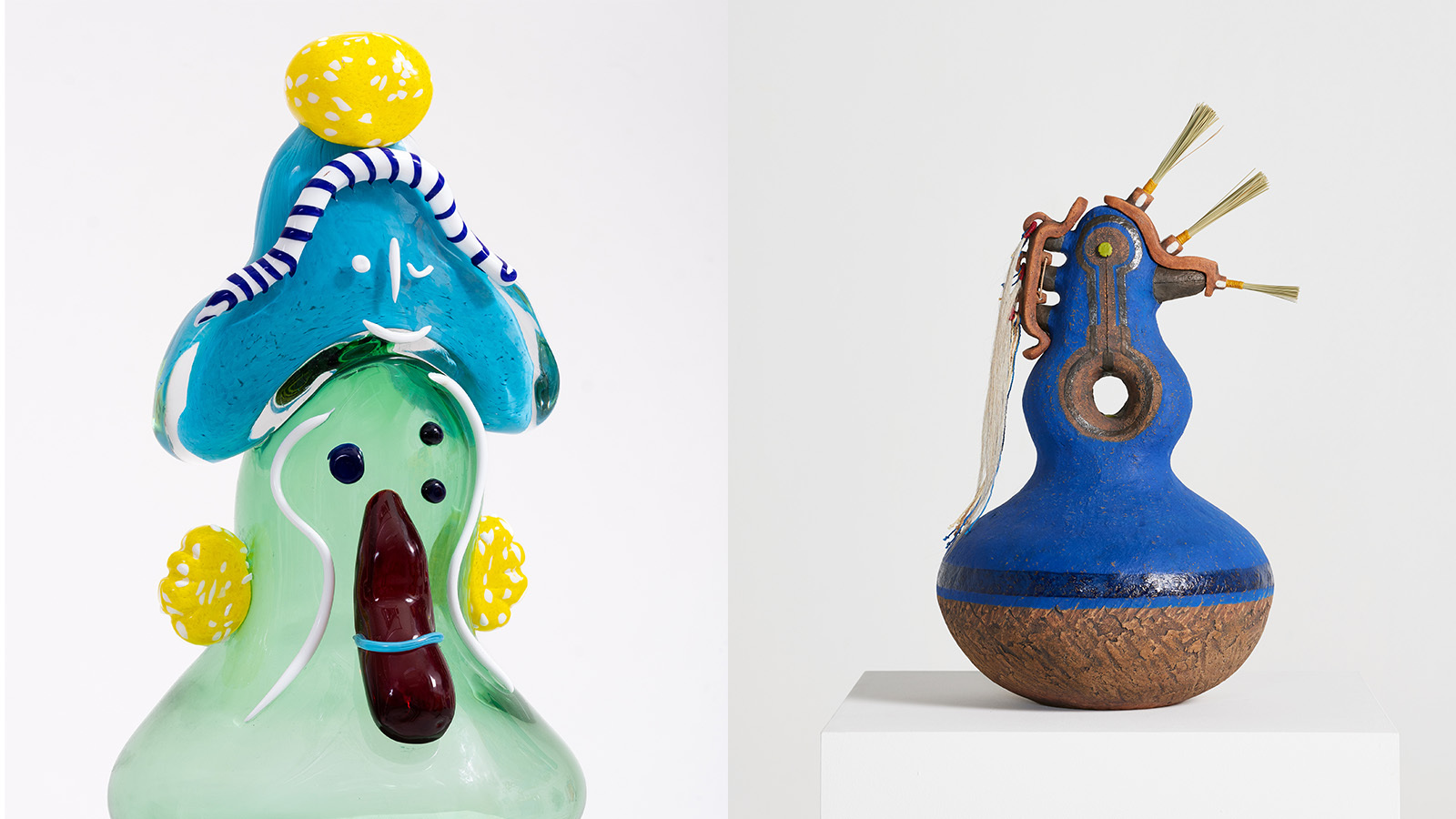 Design Miami 2024 is alive with possibility: here are 14 things to see
Design Miami 2024 is alive with possibility: here are 14 things to seeDesign Miami 2024 opens 4-8 December – let Wallpaper* guide you to the highlights, from dazzling installations to plump sofas and anthropomorphic sculptures
By Ali Morris
-
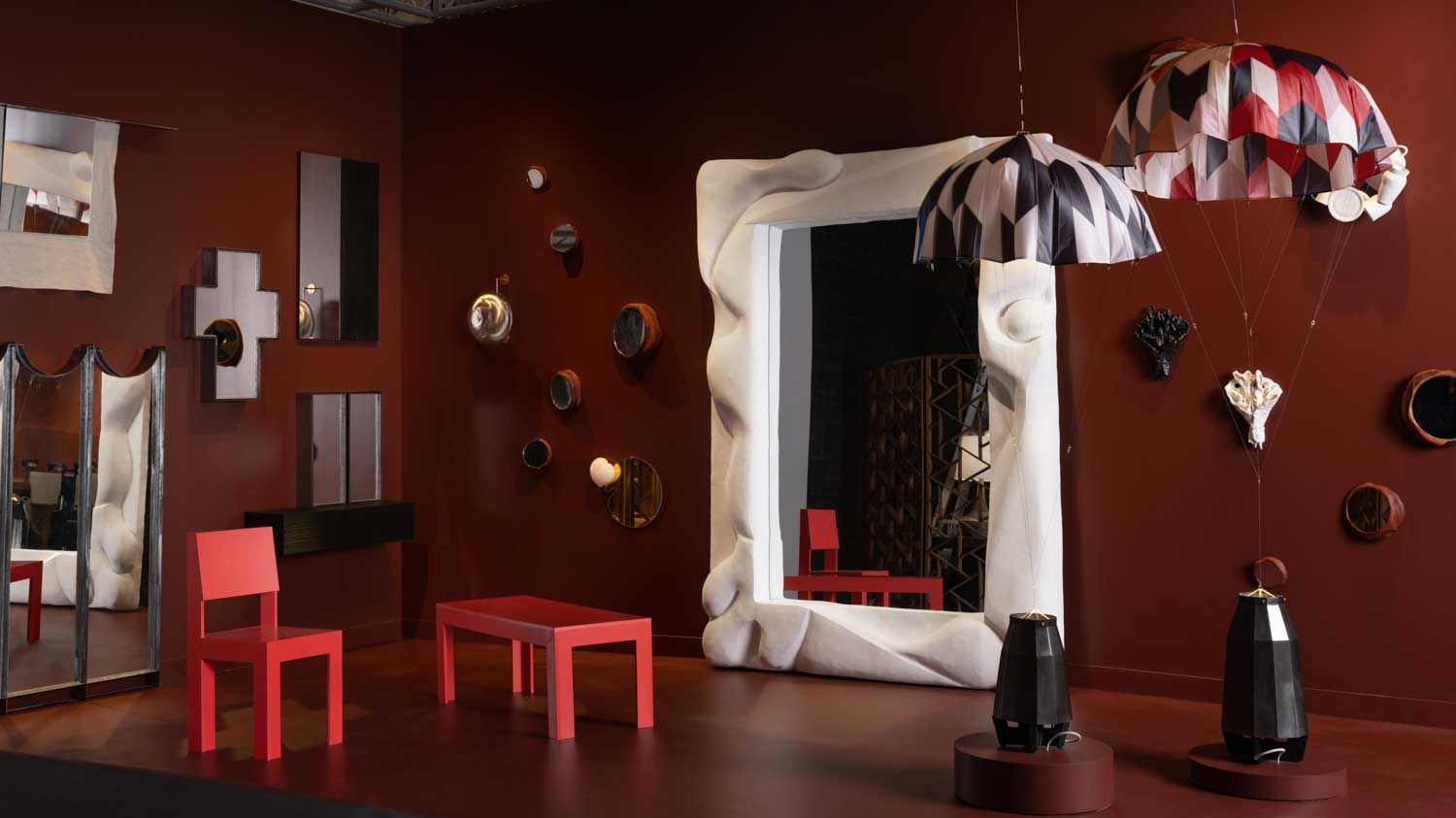 Design Miami 2022: highlights from the fair and around town
Design Miami 2022: highlights from the fair and around townDesign Miami 2022 (30 November – 4 December) aims at ‘rebooting the roots of our relationship with nature and collective structures, ecospheres, and urban contexts’
By Sujata Burman
-
 Nendo’s collaborations with Kyoto artisans go on view in New York
Nendo’s collaborations with Kyoto artisans go on view in New York‘Nendo sees Kyoto’ is on view at Friedman Benda (until 15 October 2022), showcasing the design studio's collaboration with six artisans specialised in ancient Japanese crafts
By Pei-Ru Keh
-
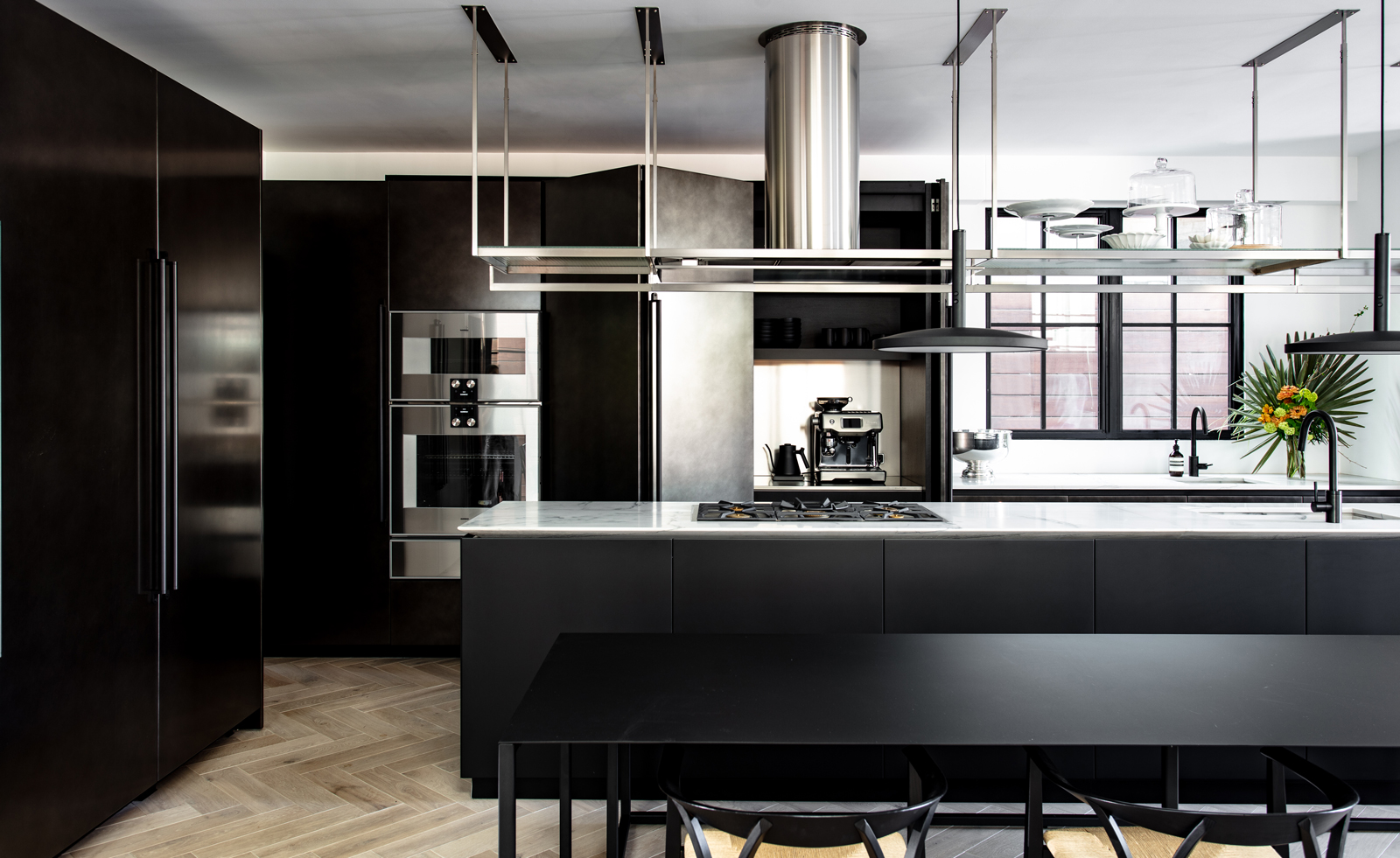 Italian craftsmanship comes to Los Angeles in this eclectic Venice Canals apartment
Italian craftsmanship comes to Los Angeles in this eclectic Venice Canals apartmentBoffi Los Angeles celebrates a juxtaposition of texture throughout a waterside bolthole
By Hannah Silver
-
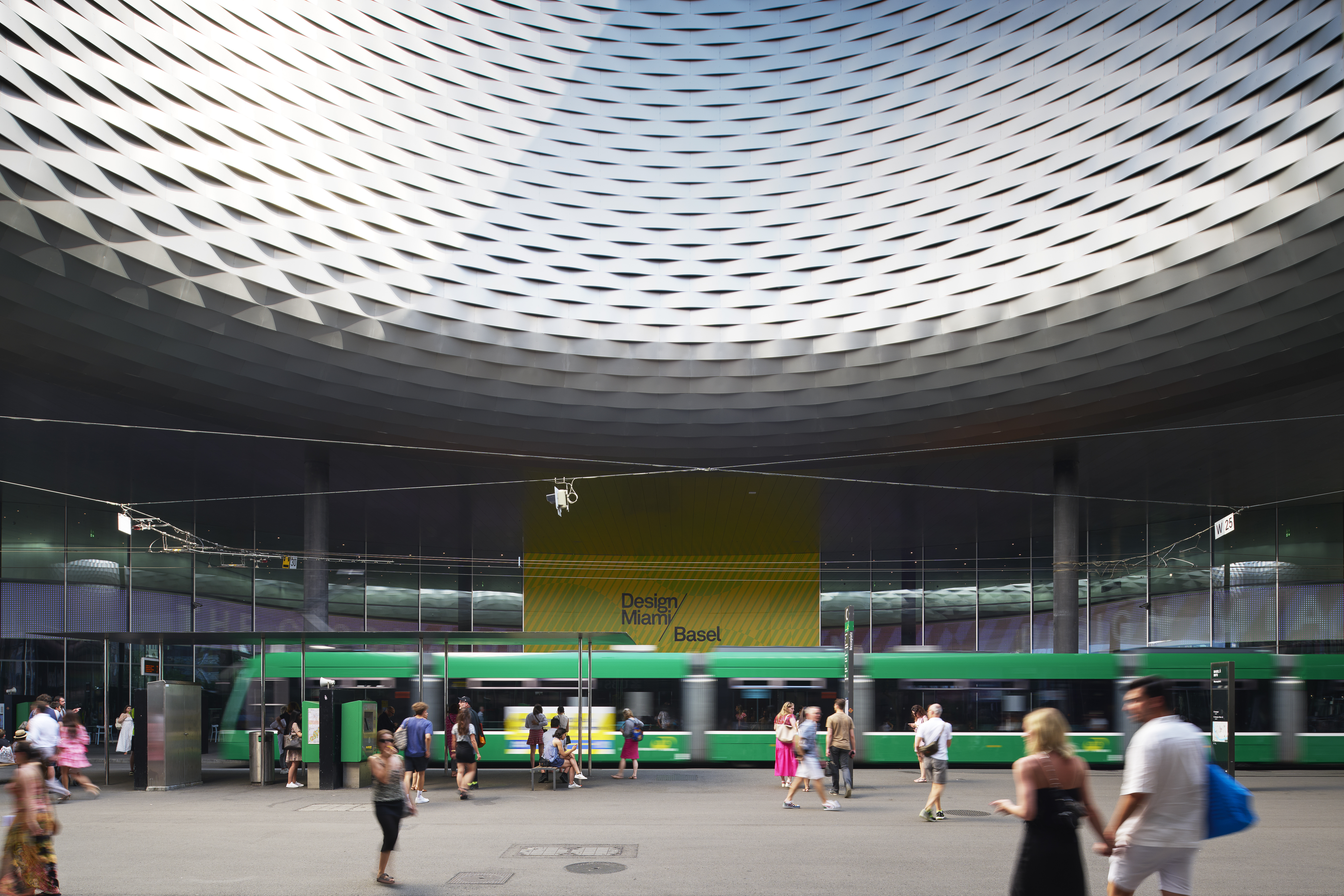 Design Miami/Basel 2022 explores the Golden Age
Design Miami/Basel 2022 explores the Golden AgeDesign Miami/Basel 2022, led by curatorial director Maria Cristina Didero, offers a positive spin after the unprecedented times of the pandemic, and looks at the history and spirit of design
By Rosa Bertoli
-
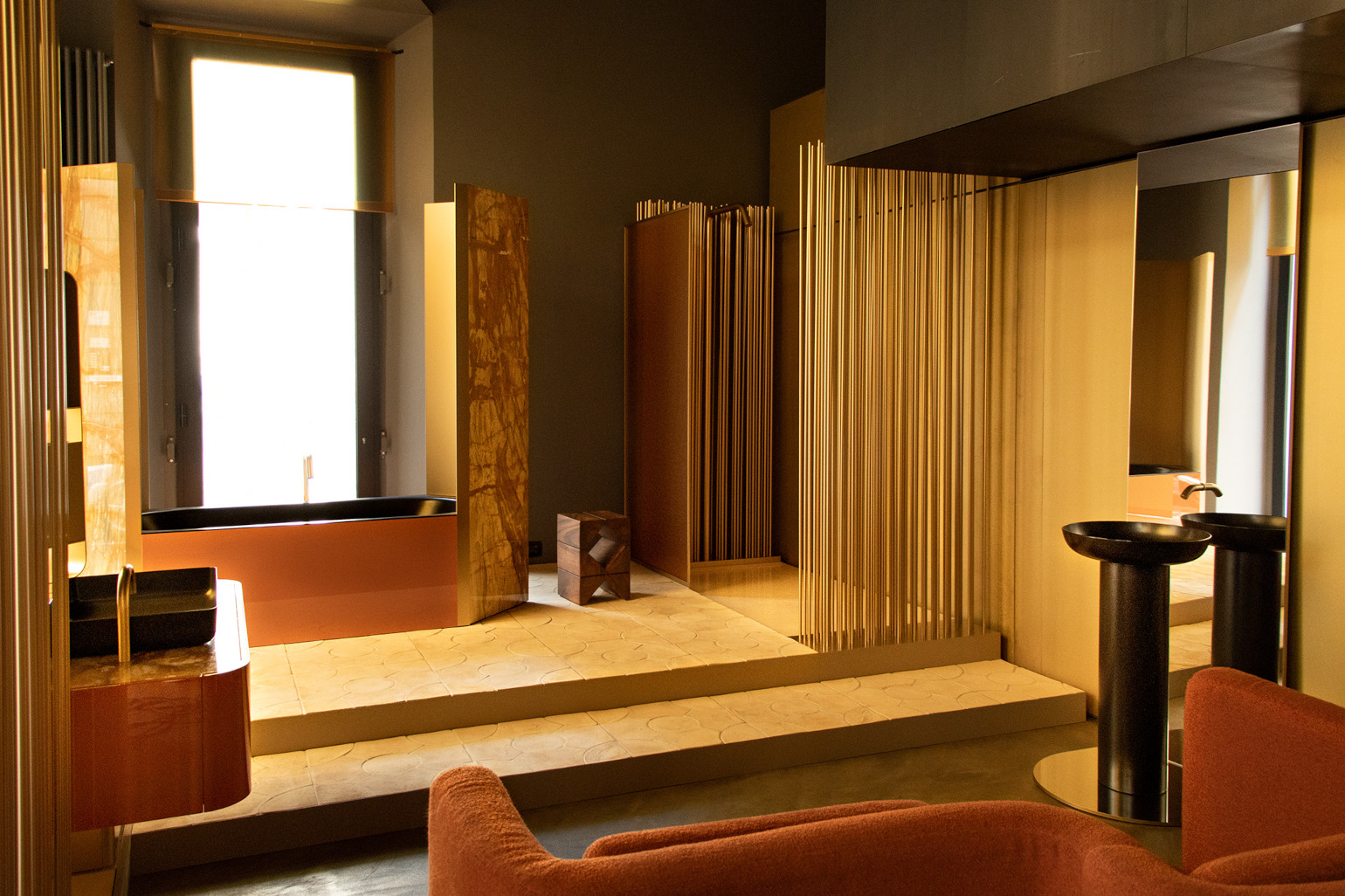 Cristina Celestino’s Bathscape is both luxurious and sustainable
Cristina Celestino’s Bathscape is both luxurious and sustainableDesigner Cristina Celestino reimagines the bathroom as a series of oases for wellbeing, for Kaldewei’s Milan Design Week 2022 presentation
By Cristina Kiran Piotti
-
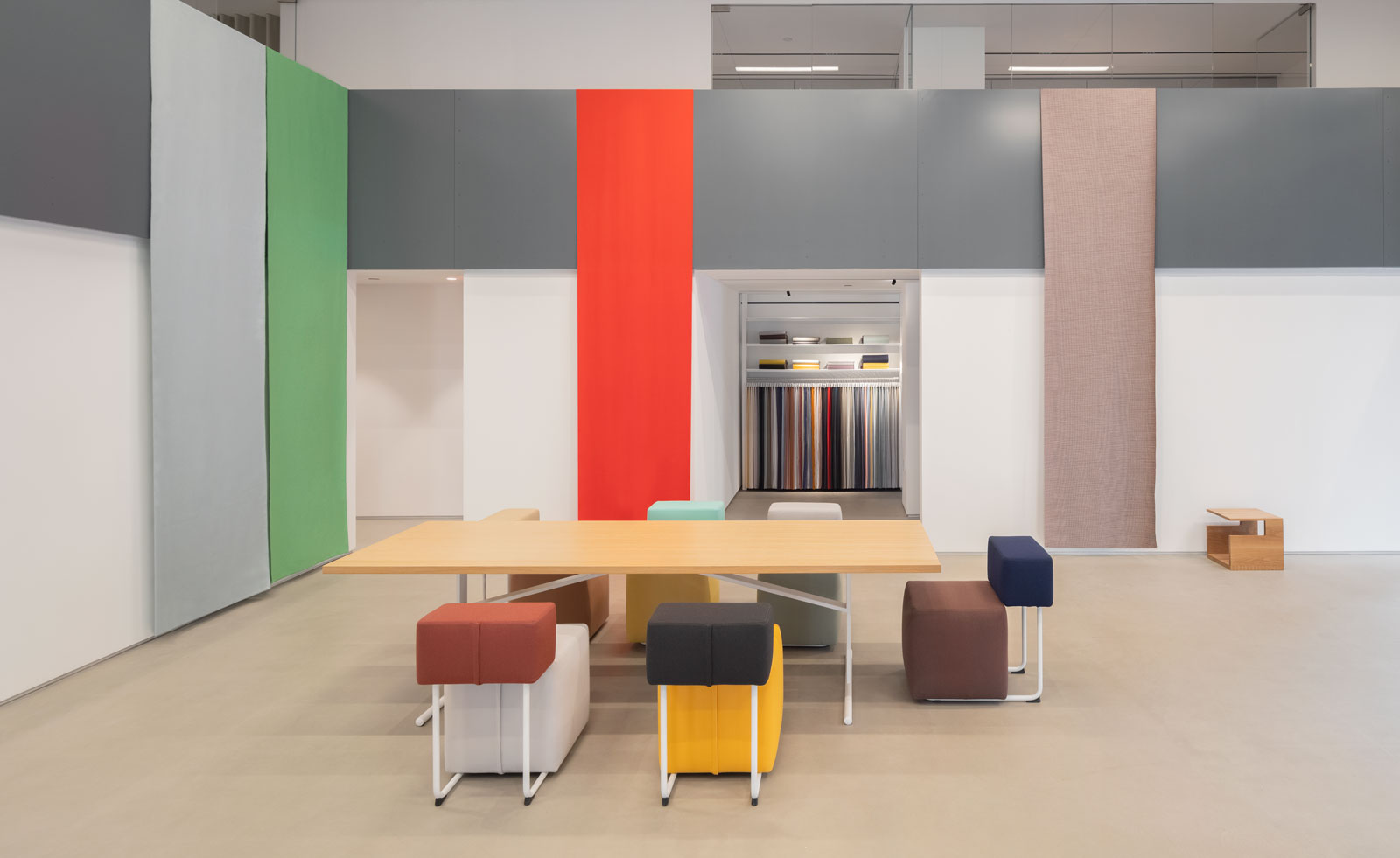 Kvadrat’s flagship New York showrooms encompass colourful design codes
Kvadrat’s flagship New York showrooms encompass colourful design codesIndustrial designer Jonathan Olivares and architect Vincent Van Duysen have worked with Danish textile brand Kvadrat on the vast new space, also featuring furniture by Moroso
By Hannah Silver